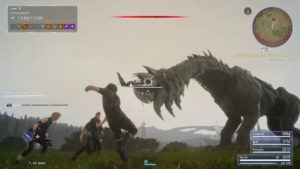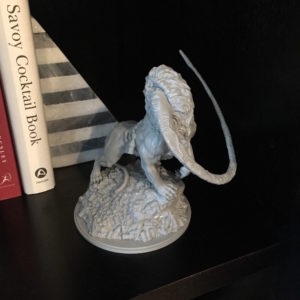AD&D 2E campaign elevator pitch, inspired heavily by Monster Hunter, Shadow of the Colossus, and Kingdom Death.
The holy books are three: the Book of Monsters, the Book of Rites, and the Book of Heroes.
The Book of Monsters recounts the first aeon, when people were few, gods unknown, and monsters preeminent. Within are details about the greatest monsters and their demesnes, along with methods of avoidance and appropriate tribute.
The Book of Rites recounts the beginning of the second aeon, time of the city-builders, when people found gods. Within are details about gods, particular rituals, and powerful spells.
The Book of Heroes recounts the end of the second aeon, when gods and heroes, working together, destroyed or banished the greater monsters. By the close of the second aeon, many heroes had taken up rulership and founded dynasties.
So began the third aeon. However, many heroes were unsatisfied by earthly reign alone. Pridefully, these upstarts petitioned for godhood, but they were denied or ignored. Undeterred, many heroes continued to seek exaltation, forcing civil strife among mortals, dividing usurpers from loyalists.
During the following conflicts, the greater monsters slipped their shackles. Loyalists claim that usurpers sought to use the greater monsters against the gods but lost control. Usurpers claim that the gods released the monsters as punishment. Whatever the truth, greater monsters return, reclaiming their demesnes, and laying waste to mortal estate.

Source: screen shot from some FF 15 YouTube clip
Rules are some portion of AD&D 2E, as written, interpreted amiably, along with hazard system rules for resource depletion, and simple strength-based encumbrance.
Experience points are rewarded for defeating greater monsters or recovering treasure. No XP for killing minions or minor enemies.
The haven turn events table is basically the encounter table of all revealed greater monsters. (That is, the ones that I have gotten around to finalizing stats for and situating.) All the godzillas are going to keep stepping on things until adventurers deal with them.
Greater monsters will be based on entries from the 2E Monstrous Manual with some degree of Necropraxis gloss.
There will be dungeons. Though some of them might be on the large size, the idea is to think about dungeons as big monster lairs more than anything else.
The Book of Monsters itself serves as an in-game quest board full of particular marks and where to find them.
Shout-outs to the LOZAS system, the Library of de la Torre campaign setting, and various Final Fantasy hunt systems, which provide some structural inspiration.



You have sold me. The main selling point is the limited avenues to gain XP.
Works for me – not sure what AD&D 2E means these days – but I’d try to find time to play. On a pragmatic game content level, as much as I distrust the ‘boss monster’ conception, I like the idea of monster as factions with individual actions during downtime as something generated randomly or procedurally.
nice!
digital marketing agency
best digital marketing agency in dubai